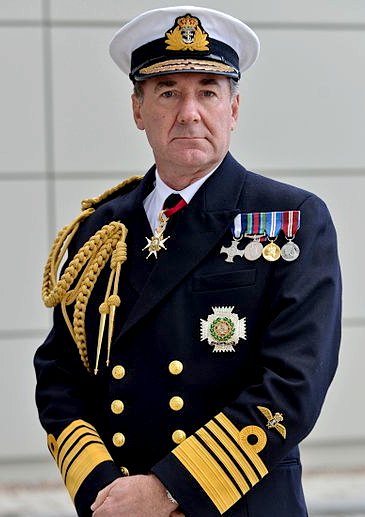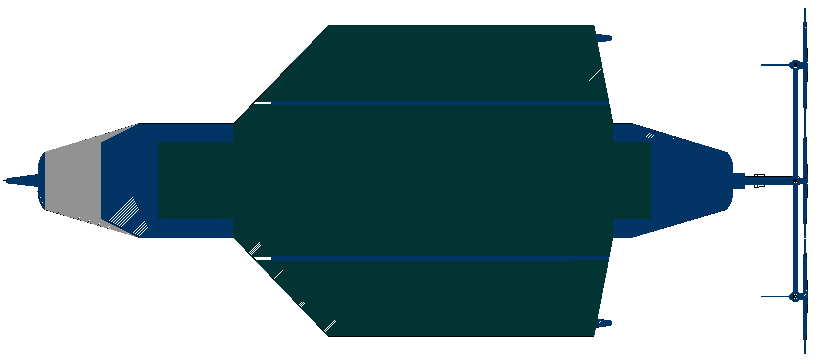|
MARITIME AUTONOMOUS SYSTEMS - Conference, Haslar, Oct 2014
|
|
Admiral Sir George Michael Zambellas KCB DSC DL (born 4 April 1958) is the current First Sea Lord and Chief of the Naval staff of the Royal Navy. In his early career he served as a helicopter pilot with 814 Naval Air Squadron, 829 Naval Air Squadron and then 815 Naval Air Squadron. As captain of HMS Chatham he was deployed as part of Operation Palliser off Sierra Leone for which he received the Distinguished Service Cross in 2001. He went on to be Fleet Commander and Deputy Chief of Naval staff of the Royal Navy in early 2012. Sir George is listed to give a keynote address.
About the CDE's Enduring Challenge Competition, the First Sea Lord said: "The Navy used to be irrepressibly curious about how to get more from its technology. It used to coax, fiddle and fix in pursuit of a battle-winning edge. Today that is much harder, because modern systems are more complex and inaccessible. But we must remain institutionally inquisitive about S&T. We must harness the energy and focus of the operational S&T legacy from Afghanistan, much of which still applies directly to the Navy, especially in the littoral. We must also learn how to transfer that knowledge into our future maritime applications. This Showcase event showed how we can build on that, working together to continue our inquisitive journey into S&T."
"FATHOMING THE FUTURE"
Swinging this particular lead is the UK Ministry of Defence, QinetiQ & The Society of Maritime Industries. The gathering though is not advertised as open to the general public, hence the term 'event' may be somewhat confusing to some. It's probably more accurately an insider briefing, or where and what shall we do now type of gathering. To wit: Google building 100 autonomous electric cars using DARPA generated robotic desert vehicle technology to navigate using an iphone app. In other words autonomous navigation and robotics is nothing new and the UK, a nation of innovators, is being overtaken on all fronts.
On the other hand innovative autonomy is something Britain can contribute to. Official secrets and secret technology is exactly that. That's the whole point of secret squirrel. But with public projects in other countries overtaking domestic military projects, change is likely to be fast and furious and the demand for better performance without cloak and dagger; considerable.
JOHN ERICSSON improved ship design with screw-propellers. However, the Admiralty disapproved of the invention as being disruptive. As a result, in 1839, Ericsson took his talent to New York where Captain Robert Stockton obtained funding for a 700-ton sloop called the USS Princeton. Approaching completion of this ship Stockton began working to force Ericsson from the project having avoided letting outsiders know that Ericsson was the inventor. Such struggles are commonplace for innovators whose work and reputation suffers, but is nevertheless noteworthy and Stockton then did all he could to prevent Ericsson from being paid for his work because he knew that well funded Ericsson would triumph and that that success would then expose his misdirection.
Despite
giving Ericsson a cold shoulder, the British Admiralty knew that screw propulsion had obvious advantages for warships.
Paddle wheels were exposed to enemy fire in combat, whereas a propeller and its machinery were tucked away
below deck. The space taken up by paddlewheels restricted the number of guns a warship could carry, thus reducing its broadside.
Stubbornly the Admiralty refused to budge until Ericsson was otherwise
engaged. Then in 1840 the world's first propeller-driven steamship, SS Archimedes, successfully completed a series of trials against fast
paddle-wheelers. That demonstration got the Navy's attention and they
wanted more data. Finally, in 1845 the British Navy decided to compare the two systems
conclusively. For the comparison, two near equal ships were selected. In the paddlewheel corner was the champion, HMS Alecto, weighing in at 880 tons, with a 200 hp steam engine. The challenger was the propeller driven HMS Rattler, also weighing in
880 tons and also with a 200 hp steam engine.
ROBOTIC SHIPS
This proposed gathering has been designed to draw together the key elements in the exploitation of autonomy, hopefully leading to a consensus on the impact of autonomous vessels in future naval operations.
This
gathering aims to provide:
This conference should be a step in the right direction in understanding the future seascape in which military and commercial challenges must be met in an international arena; where not progressing is in reality regressing. The failure of British firms to innovate and adapt to changing markets, led directly to the loss of our motor car and motorcycle manufacturing heritage to a flood of eastern imports. Then there was Kodak.
The 3 day Navy (Government) and naval suppliers (at sensitive security level) event includes keynote speakers, chair of the sessions and consideration of issues by longstanding experts in their field. We agree that such deliberations should be cautious, but accountability to the taxpayer in terms of contracts and value, is a new priority set against our national debt.
DRAFT
AGENDA - TO BE CONFIRMED:
(Government Only at "Official Sensitive" security level)
(Government & Industry at "Official" security level)
Conference networking reception & dinner on HMS Warrior (Industry/Government).
(Government & Industry at "Official" security
level) Keynote address: Executive Director,
National Oceanography
Centre, Professor Ed Hill, (tbc).
QinetiQ Maritime Autonomy Centre, Haslar, PO12 2AG, UK
DISRUPTIVE TECHNOLOGY - The Bluefish ZCC platform is enabling research for zero emission ships (and warships) of the future to include mine and drone countermeasures, based on a stable SWASH hull design proposed for development in the UK: Patent GB1301488. This small vessel is designed to use no diesel fuel in normal operation to monitor the oceans autonomously at relatively high speeds of 7-10 knots continuous average, 24/7 and 365 days a year. Larger versions of this format might carry significant weaponry for coordinated convoys, or persistent deterrent. This is only possible with the unique energy harvesting (wind and solar) system. This vessel could pay for itself in bunker costs every 10 years. Fuel for thought for fleet operators looking for ways to save money and clean up their act! Rule Britannia - Yes, but not if we don't get a handle on it. Progress depends on non-conformists.
LINKS
http://en.wikipedia.org/wiki/John_Ericsson http://en.wikipedia.org/wiki/George_Zambellas http://www.qinetiq.com http://www.2020visionnetwork.eu/sme/ http://erc.europa.eu/funding-schemes http://ec.europa.eu/research/horizon2020/index_en.cfm
|
|
This website is Copyright © 2014 Bluebird Marine Systems Ltd. The names Bluebird™, Bluefish™, and the blue bird and fish in flight logos are trademarks. The color blue is an essential element of the marks. All other trademarks are hereby acknowledged.
|






